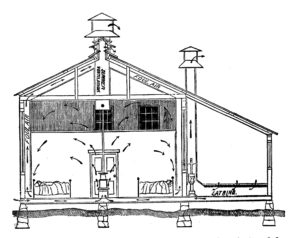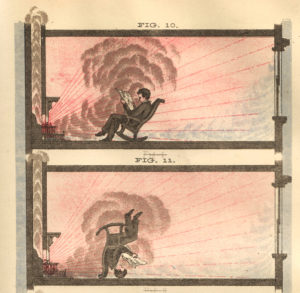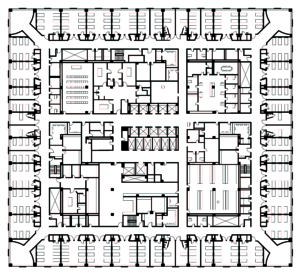Although ventilation is known to prevent disease, many modern buildings are sealed environments with fixed windows or windows that are opened rarely. The COVID-19 pandemic revealed the dangers of this approach. If not adequately filtered, recirculated air spreads viral particles indoors.
The COVID-19 pandemic prompted a public reckoning and challenged architects to rely less on complex mechanical systems that pollute the environment.
Content from the exhibition Design and Healing: Creative Responses to Epidemics, curated by MASS Design Group and Cooper Hewitt, Smithsonian Design Museum
+++++++++++++++++++++++++++++++++++++++++++++
Ventilation for a Hospital, 1869
Engineer Lewis W. Leeds (American, 1829–1896) was responsible for ventilating government hospitals in the 1860s. He used fresh air flow to prevent the spread of contagious diseases. In this drawing of a hospital, foul air exits through vents near the floor.

Diagram: Lewis W. Leeds, Man’s Own Breath Is His Greatest Enemy, 1869
+++++++++++++++++++++++++++++++++++++++++++++
Circulation of Indoor Air, 1869
This drawing shows how fresh air is pulled through the room by the chimney. The clean air mostly hits the back of the person’s head. Thus, someone seated upside down would inhale more fresh air than someone seated normally.

Diagram: Lewis W. Leeds, Man’s Own Breath Is His Greatest Enemy, 1869
+++++++++++++++++++++++++++++++++++++++++++++
Bellevue New Building, New York, New York, USA, 1973
This gigantic hospital encloses an entire Manhattan city block. When the building opened, workers questioned its massive scale and the lack of light in its windowless core.

Designed by Pomerance and Brienes in association with Katz, Waisman, Weber, Strauss, and Blumenkranz, view, typical floor plan, redrawn by MASS Design Group